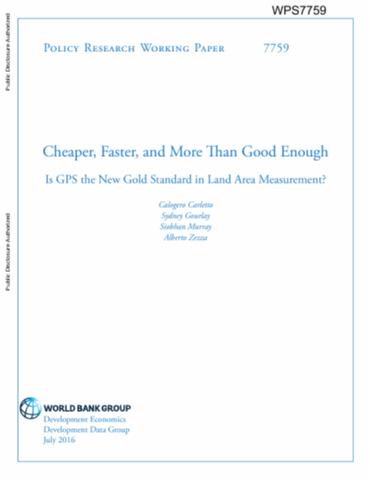Resource information
In rural societies of low- and middle-income countries, land is a major measure of wealth, a critical input in agricultural production, and a key variable for assessing agricultural performance and productivity. In the absence of cadastral information to refer to, measures of land plots have historically been taken with one of two approaches: traversing (accurate, but cumbersome), and farmers' self-report (cheap, but marred by measurement error). Recently, the advent of cheap handheld GPS devices has held promise for balancing cost and precision. Guided by purposely collected primary data from Ethiopia, Nigeria, and Tanzania (Zanzibar), and with consideration for practical household survey implementation, the paper assesses the nature and magnitude of measurement error under different measurement methods and proposes a set of recommendations for plot area measurement. The results largely point to the support of GPS measurement, with simultaneous collection of farmer self-reported areas.


